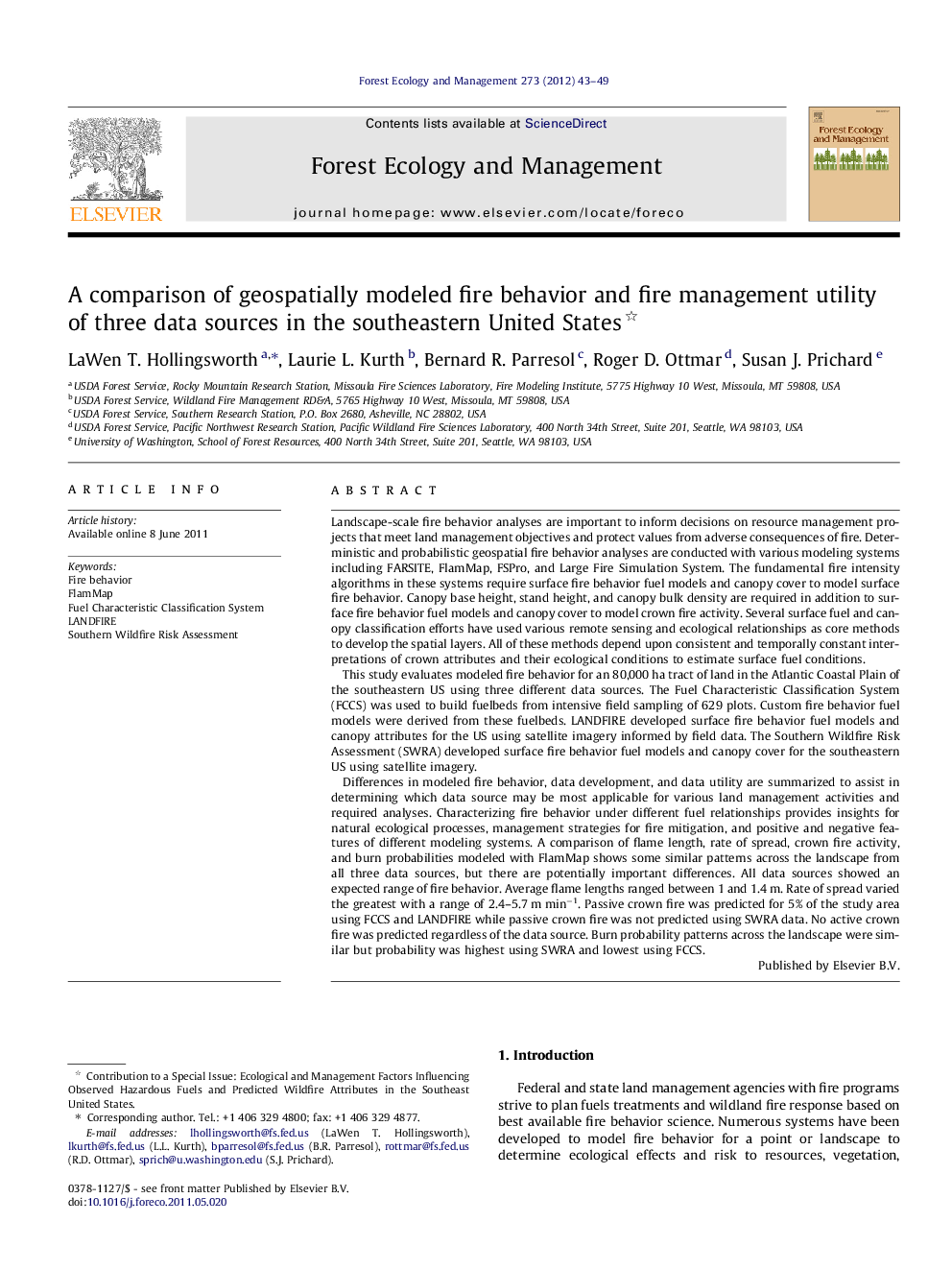| کد مقاله | کد نشریه | سال انتشار | مقاله انگلیسی | نسخه تمام متن |
|---|---|---|---|---|
| 87652 | 159260 | 2012 | 7 صفحه PDF | دانلود رایگان |

Landscape-scale fire behavior analyses are important to inform decisions on resource management projects that meet land management objectives and protect values from adverse consequences of fire. Deterministic and probabilistic geospatial fire behavior analyses are conducted with various modeling systems including FARSITE, FlamMap, FSPro, and Large Fire Simulation System. The fundamental fire intensity algorithms in these systems require surface fire behavior fuel models and canopy cover to model surface fire behavior. Canopy base height, stand height, and canopy bulk density are required in addition to surface fire behavior fuel models and canopy cover to model crown fire activity. Several surface fuel and canopy classification efforts have used various remote sensing and ecological relationships as core methods to develop the spatial layers. All of these methods depend upon consistent and temporally constant interpretations of crown attributes and their ecological conditions to estimate surface fuel conditions.This study evaluates modeled fire behavior for an 80,000 ha tract of land in the Atlantic Coastal Plain of the southeastern US using three different data sources. The Fuel Characteristic Classification System (FCCS) was used to build fuelbeds from intensive field sampling of 629 plots. Custom fire behavior fuel models were derived from these fuelbeds. LANDFIRE developed surface fire behavior fuel models and canopy attributes for the US using satellite imagery informed by field data. The Southern Wildfire Risk Assessment (SWRA) developed surface fire behavior fuel models and canopy cover for the southeastern US using satellite imagery.Differences in modeled fire behavior, data development, and data utility are summarized to assist in determining which data source may be most applicable for various land management activities and required analyses. Characterizing fire behavior under different fuel relationships provides insights for natural ecological processes, management strategies for fire mitigation, and positive and negative features of different modeling systems. A comparison of flame length, rate of spread, crown fire activity, and burn probabilities modeled with FlamMap shows some similar patterns across the landscape from all three data sources, but there are potentially important differences. All data sources showed an expected range of fire behavior. Average flame lengths ranged between 1 and 1.4 m. Rate of spread varied the greatest with a range of 2.4–5.7 m min−1. Passive crown fire was predicted for 5% of the study area using FCCS and LANDFIRE while passive crown fire was not predicted using SWRA data. No active crown fire was predicted regardless of the data source. Burn probability patterns across the landscape were similar but probability was highest using SWRA and lowest using FCCS.
► Fire behavior modeling results for the southeast US varied between data sources.
► Utility of a data source varies depending on the particular management objectives.
► Selection of data source is influenced by availability and desired accuracy.
► The ability to quantify site-specific fire effects may influence data choice.
► The ability to analyze values at risk to fire may affect data selection.
Journal: Forest Ecology and Management - Volume 273, 1 June 2012, Pages 43–49